Understanding the different types of jumper wires available can significantly enhance the efficiency and versatility of your prototyping projects.
Jumper wires make temporary connections on a breadboard or between components. The male-to-male, female-to-female, and male-to-female are types of jumper wires. The male-to-male jumper wire has a pin at both ends, the female-to-female has a female connector at both ends and the male-to-female wire has a pin at one end and a female connector at the other end.
Let’s delve into the details of the various types of jumper wires commonly used in breadboard-based projects.
Jumper wires
Before going into the details of types of jumper wires, let’s first discuss what is jumper wires.
To make the temporary connections between components and the breadboard, the short, flexible electrical wires which are called jumper wires are essential.
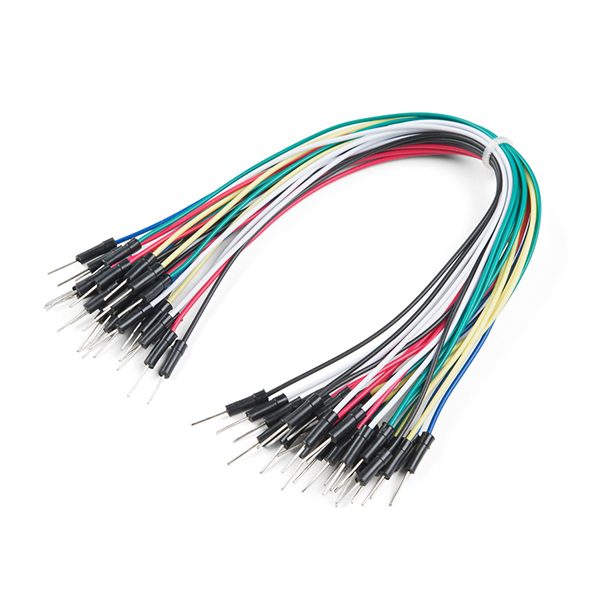
Breadboard is a tool in electronics that provides a platform to connect different electronic components to make a circuit.
To learn more about breadboard, check out our article:
On the breadboard, you insert different components but to make an electrical connection between them you need wires and these wires are called jumper wires.
They help in making easy and quick connections between components in prototyping.
They are typically made of solid copper wire, with connecting pins or holes at each end depending on the type of the jumper wires. The jumper wires come in different colors but the color has no specific meaning, this is just for good visuals.
The thickness and the length of the jumper wires are also different. The thicker the wire, the more current will flow so the thin wires are mostly suitable for low-power applications. The lengths range from a few centimeters to several meters.
There are various kinds of jumper wires depending on the connector, each one has its usage. There are female connectors and male connectors.
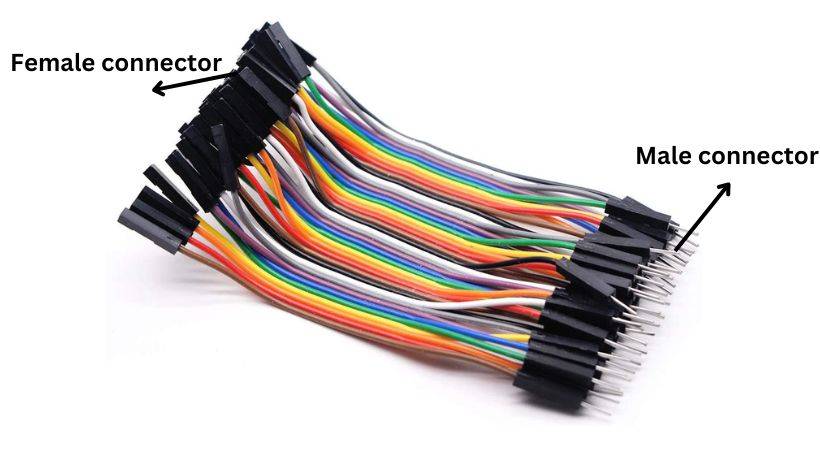
The connector is the type of pin which are inserted into the breadboard holes. On the other hand female connector is a connector with a hole inserted in a pin.
let’s talk about them.
Types of jumper wires
Let’s see different types of jumper wires in this section.
1. Male-to-male jumper wires
Male-to-male jumper wires are a type of wire that has a male connector on both ends. The male connector is the type with pins that are inserted into breadboard holes or in the female connector.
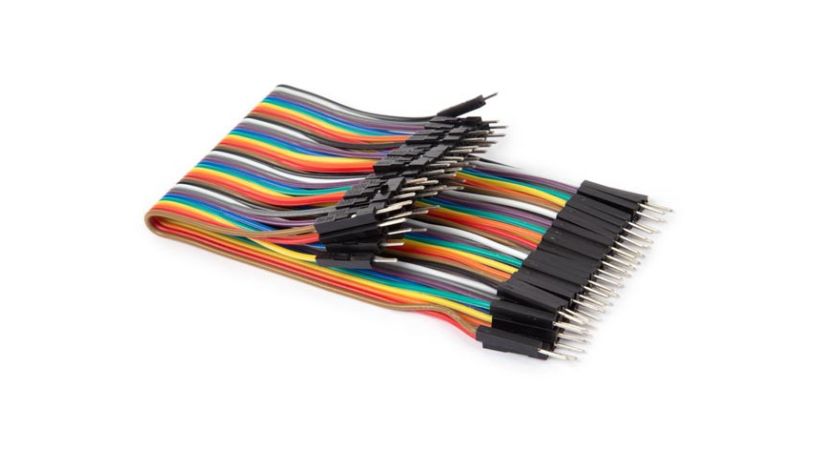
Both ends of the jumper wire have a male connector pin, which is a protruding pin that can be inserted directly into breadboard holes.
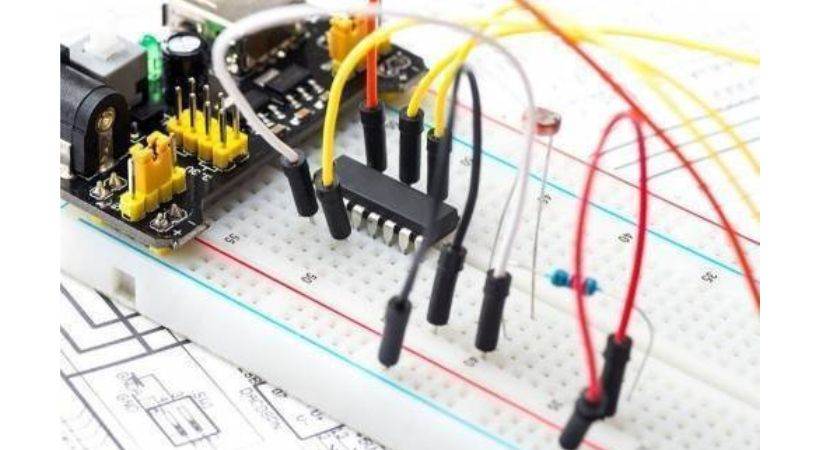
These Wires are perfect for rapidly connecting components on a PCB or breadboard when a project is in its prototyping stage. They are often used in educational settings to teach students about electronics and circuitry.
One of the main advantages of male-to-male jumper wires is they ensure that the pins on both ends are of the same size and fit properly into the breadboard holes.
Male-to-male jumper wires are a versatile and convenient tool for making electrical connections without the need for soldering. They are ideal for prototyping, testing, and repair applications.
2. Female-to-female jumper wires
Another type of jumper wire is female-to-female wire. The female connectors are connected at both ends of these types of wires.
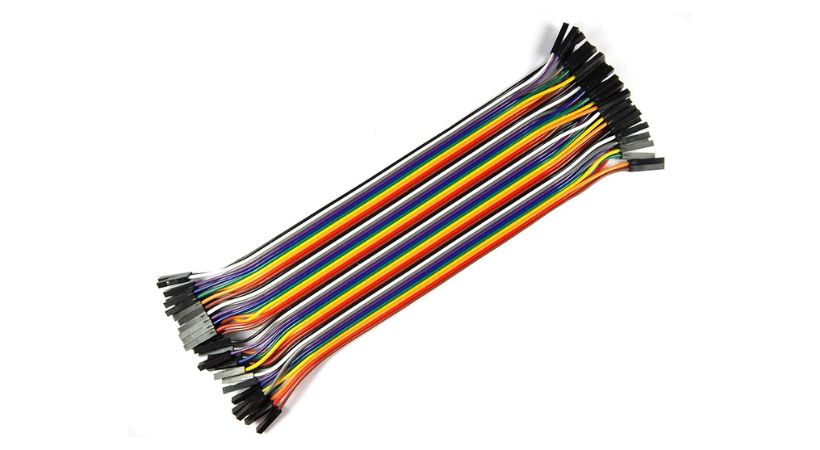
As you can see there is no pin at any end of the wire so it means they will be connected to the components which has pins.
These connectors are designed to accept and hold male pins, allowing for easy and secure connections between different components. These jumper wires are primarily used in electronics, prototyping, and breadboarding applications.
They provide a convenient way to connect various electronic components, such as microcontrollers, sensors, and actuators, without the need for permanent soldering or wiring.
3. Female-to-male jumper wires
The female-to-male jumper wires are a combination of both male-to-male and female-to-female jumper wires. They have a female connector at one end and a male connector at the other end.
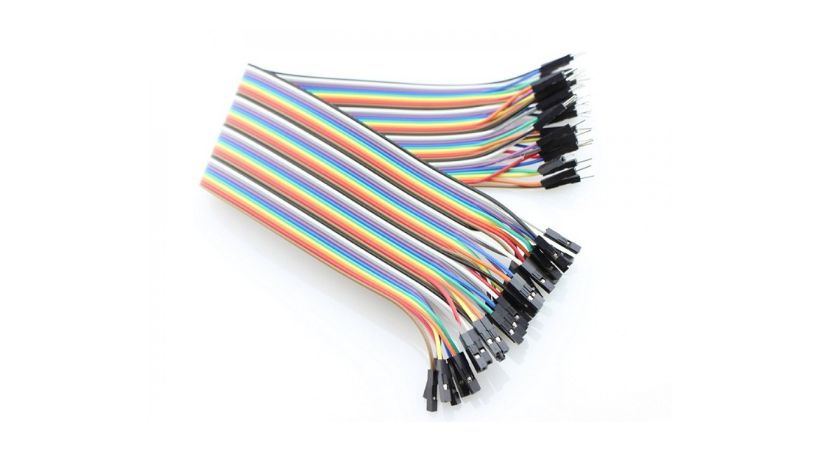
The female-to-male, female connector typically features a receptacle designed to accept male pins, while the male end comprises pins that can be inserted into female headers, sockets, or directly into the holes of a breadboard.
They are commonly used in breadboard prototyping to connect components with male pins or headers to the breadboard.
Application of jumper wires
In electronics, the jumper wires have a wide range of applications, from basic breadboard experiments to complex circuit design projects.
Let’s explore these applications in detail:
1. Breadboard prototyping
When doing breadboard prototyping, jumper wires are often utilized to make temporary connections between electronic components.
With the use of jumper wires, users can quickly and simply connect components like resistors, capacitors, LEDs, sensors, and integrated circuits (ICs) to create circuits without the need for soldering.
Because of this, iterating on project concepts, testing component operations, and experimenting with circuit designs are all made easier using breadboard prototyping.
2. Component interfacing
The smooth connecting of components with various pin configurations is made possible by jumper wires.
For instance, they enable users to link microcontrollers (like Arduino and Raspberry Pi) or development boards with suitable headers to sensors, actuators, displays, and other peripherals.
Jumper wires offer versatility in connecting components with multiple pin types.
They are available in male-to-male, male-to-female, and female-to-female combinations which make connection with various components possible.
3. Educational institute
Jumper wires are incredibly useful tools in educational settings for doing practical experiments and teaching electrical concepts.
With the use of jumper wires, students can construct simple circuits, investigate ideas like Kirchhoff’s and Ohm’s laws, and obtain hands-on experience in circuit design and analysis.
With the use of jumper wires, interactive learning is made possible. Students may see how circuits behave, solve common problems, and improve their critical thinking and problem-solving abilities.
4. Circuit testing
In the testing and debugging stages of electronic circuit construction, jumper wires are indispensable.
Jumper wires are used by engineers and hobbyists to monitor signals, test different points in a circuit, and diagnose possible problems.
Users can investigate performance issues, confirm signal integrity, and isolate defective components by placing jumper wires strategically at various junctions.
This makes it easier to find and fix problems, guaranteeing the final circuit design’s dependability and functionality.
These are some of the applications of jumper wires and convenient means of establishing electrical connections.
Conclusion
Jumper wires are used in electronics to connect different electronic components. These wires are available in different types, lengths, and colors.
The color doesn’t define any specific means, the length of the wire depends on how long you want your wire.
Based on the connector, the jumper wires are divided into three types: male-to-male, female-to-female, and female-to-male.
The male-to-male jumper wire has a pin at both ends and can be directly inserted into the breadboard. They are convenient to use for breadboard prototyping.
Female-to-female wires have female connectors on both sides and they are used in the situation where components have pins. The last one is female-to-male, it has both the pin and female connector configurations.
The jumper wires have many applications and they are versatile and indispensable tools in electronics prototyping, experimentation, and education.
This was all about types of jumper wires, I hope it will help you in learning about jumper wires.
Thank you and stay blessed…
